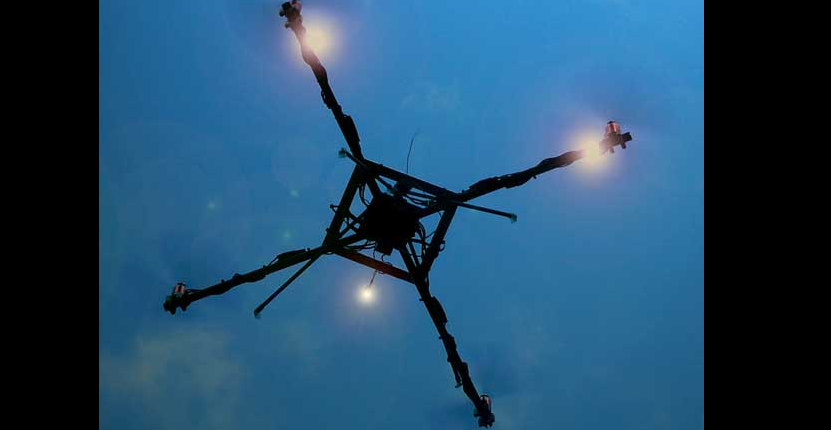 If you have ever had the opportunity to pay a visit to the Smithsonian Museums in Washington D.C. you likely understand how valuable our past, the history of mankind, and our planet, can be on today’s world. It’s not just the Smithsonian Museums though. There are thousands of museums across the globe, housing hundreds of millions of artifacts, dating back hundreds of millions of years. Museums act as a way to safeguard these artifacts from theft and destruction, however, even the confines of a secure museum doesn’t ultimately mean 100% protection.
If you have ever had the opportunity to pay a visit to the Smithsonian Museums in Washington D.C. you likely understand how valuable our past, the history of mankind, and our planet, can be on today’s world. It’s not just the Smithsonian Museums though. There are thousands of museums across the globe, housing hundreds of millions of artifacts, dating back hundreds of millions of years. Museums act as a way to safeguard these artifacts from theft and destruction, however, even the confines of a secure museum doesn’t ultimately mean 100% protection.
Throughout our history, valuable representations of that history have been destroyed, leaving no trace in their paths. Whether it’s war, natural disaster, or forms of terrorism, this destruction continues to happen as we speak. Just a couple of months ago, the terrorist group ISIS, destroyed several 3,000-year-old Assyrian statues and artifacts because of their over-the-top religious beliefs.
One way to preserve these pieces, ensuring their preservation, at least digitally, is by 3D scanning them all. This would then allow for the 3D printing of replicas if warranted. The Smithsonian has actually begun to do this, even making their 3D scanned models available to the public for free on their website, giving the world an at-home museum experience. The problem, however, is that these scans are expensive and very time consuming to create. While the online gallery is impressive, it only features 20 pieces, which took the museum over 8 months to scan and post online. Considering that the Smithsonian collection features a staggering 137 million artifacts, at the rate we are going the universe may collapse on itself before we’re done.
Fortunately, one company called Fraunhofer IGD, is trying to change all of this. Working with museums using their their new 3D scanning system, they call CultLab3D, they  aim to quicken the pace of 3D scanning. The main system currently works in quite a unique way, when considering other 3D scanning approaches. An object is placed on a conveyor belt. The belt then moves towards two large arcs which scan it from all angles. The first arc features nine high resolution cameras, and the second arc hosts nine high quality ring lights. Once scanned, the software will check the outcome and then an additional scanner, attached to a robotic arm, will come by and scan any gaps that the arc cameras had missed. The entire process usually takes under five minutes, and can accommodate objects which weigh as much as 110 pounds, and measure up to two feet in diameter.
aim to quicken the pace of 3D scanning. The main system currently works in quite a unique way, when considering other 3D scanning approaches. An object is placed on a conveyor belt. The belt then moves towards two large arcs which scan it from all angles. The first arc features nine high resolution cameras, and the second arc hosts nine high quality ring lights. Once scanned, the software will check the outcome and then an additional scanner, attached to a robotic arm, will come by and scan any gaps that the arc cameras had missed. The entire process usually takes under five minutes, and can accommodate objects which weigh as much as 110 pounds, and measure up to two feet in diameter.
This isnt all though. The company wants to scan even larger objects, perhaps even the size of buildings and skyscrapers. Imagine high quality 3D scans of structures such as Stonehenge. For this, they are working on using drones, equipped with mobile scanning devices. The company has listed the three main areas they are seeking to enter:
- Small and medium-sized artifacts: CultLab3D digitization pipeline via conveyor belt system.
- Large artifacts: Via CultLab3D autonomous scanrobots on wheels. Can scan objects up in 2.5 meters in height, with basically no limit to width.
- Monuments, buildings and excavation sites: Via their CultLab3D airborne system, which is already in development.
Fraunhofer currently is looking to get their conveyor belt system to market sometime next year. Sure, this isn’t going to allow the Smithsonian museums to scan their 137 million artifacts over night, not even over a century, but technologies like these are sure to progress, where one day, all the world’s museums, as well as landmarks and excavation sites could be digitally represented online, and their artifacts 3D printed from the comfort of your own home.
Let’s hear your thoughts on what such 3D scanning equipment could mean for museums, as well as the scanning and printing market in general. Discuss in the CultLab3D scanning forum thread on 3DPB.com. Check out the video below showing CultLab3D’s conveyor belt scanning system in action.
Subscribe to Our Email Newsletter
Stay up-to-date on all the latest news from the 3D printing industry and receive information and offers from third party vendors.
You May Also Like
3D Printing News Briefs, April 13, 2024: Robotics, Orthotics, & Hypersonics
In 3D Printing News Briefs today, we’re focusing first on robotics, as Carnegie Mellon University’s new Robotics Innovation Center will house several community outreach programs, and Ugogo3D is now working...
Rail Giant Alstom Saves $15M with 3D Printing Automation Software 3D Spark
3D Spark has entered into a three-year deal with the rail giant Alstom. Alstom, a transport behemoth with annual revenues of $16 billion, specializes in the manufacture of trains, trams,...
Meltio Expands Global Reach with New Partnerships in the Americas and Europe
Spanish 3D printing manufacturer Meltio has expanded its sales network across the globe. With the addition of three new partners in the United States, Brazil, Argentina, and Italy, Meltio aims...
3D Printing Webinar and Event Roundup: April 7, 2024
Webinars and events in the 3D printing industry are picking back up this week! Sea-Air-Space is coming to Maryland, and SAE International is sponsoring a 3D Systems webinar about 3D...

































